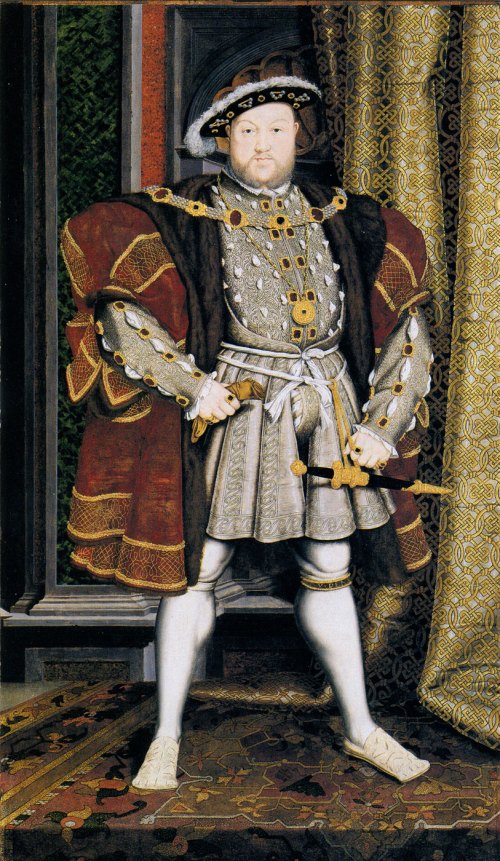Back in the days before copyright existed, it was not only common for artists to paint copies of famous art to learn how to paint, to learn their craft, but sometimes because that was the only way they could get access to the subjects they wanted to paint.
Take monarchs, for instance.
This is one of the many anonymous copies of the official portraits of Henry VIII.
[I felt that the framing of the digital image was a bit too tight; there wasn’t enough head room. So I’ve digitally reframed the picture, extending the space between the top of Henry’s head and the frame.]
Sitting for a painted portrait was a gruelling task, magnitudes worse than having your photograph taken. Still, it was one of the things that was expected of a monarch in the days before photography. In the 16th Century, the King of England was expected to take some time out of his busy schedule to pose for a official portraits on occasion.
But the King wouldn’t just sit for any artist, he’d only sit for the best.
In the same way movie stars and presidents and monarchs vied for a chance to be immortalized in black and white by Canada’s world class portrait photographer Yousef Karsh in the 20th Century, Henry VIII wanted only the best. Hans Holbein the Younger was a portrait artist good enough to be appointed King’s Painter, and his work immortalized both Henry VIII and his court. The most famous and perhaps most regal painting that Holbein created was on a mural on the wall of the Privy Chamber of the new Whitehall Palace.
“Portrait of Henry VIII … is one of the most iconic images of Henry and is one of the most famed portraits of any British monarch.”
Henry himself was pleased enough with this work that he encouraged other artists to copy the portrait. What that means to both artists and historians of today is that the work was not lost, even though the original of that iconic painting was destroyed by fire in 1698.
But the painting lives on, and continues to be famous today because it was widely copied.
None of these artists would ever have been able to get access to the king, yet being able to copy official portraits undoubtedly gave them the means to make a living in the art field. Many of artists who made these copies never achieved fame of Hans Holbein the Younger, and many of the surviving copies of this and the other paintings of Henry were in fact painted by artists whose names have been lost. The attribution customarily given the copies is “after Hans Holbein the Younger. But although their names have been lost, an important work of art is preserved for the sake of both our history and our culture.
I don’t know any artists who want to see their work lost. Had the copyright laws of today been in place back then, this work would in fact be lost forever.

